
Austin, Texas, the host city for SMACNA’s 2019 annual convention, has a reputation for being a little, well, different.
Besides being Texas’ capital city, it’s known for being proudly out of step with the rest of the Lone Star State. Many residents, both longtime and newcomers, like its famously laid-back, progressive culture.
It may have been this unique environment that attracted almost 1,000 SMACNA members Oct. 20-23, 2019, to the city’s JW Marriott resort for the association’s annual convention. Between the golf outing that kicked off the event and the concert by rock band Foreigner that closed it, SMACNA brought together construction and business management experts to educate contractors on the trends and issues most affecting their companies.
Here’s a look at some of the Forum sessions and speakers at the conference.
Making Marketing Manageable
Marcia Barnes has never been a heating/cooling technician, but as a CEO, she helped a successful home security and satellite TV company expand into the HVAC sector —
and watched as revenues doubled.
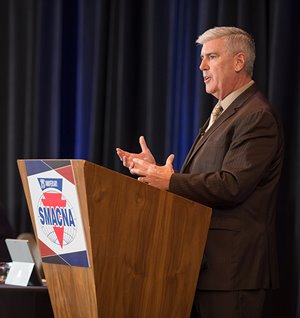
Joseph Sellers Jr.
It’s that kind of success that led SMACNA to bring Barnes, the CEO and founder of Indianapolis-based Valve & Meter Performance Marketing, to the Residential Contractors Forum. At the Forum, Barnes talked about marketing and sales and the need to focus on the return on marketing investment in order to drive effectivenss and profitibility.
During almost nine years at the home satellite and security company Defenders, Barnes moved the company into home services outside their traditional markets, growing revenues more than 500%.
At Valve & Meter, she and her staff counsel clients on what to do to generate similar results.
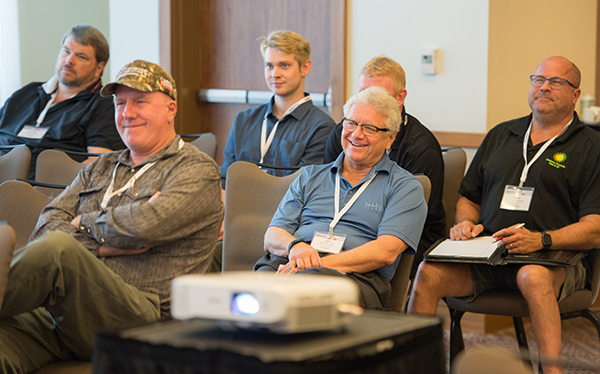
The problem is that marketing is not well understood by many business owners including contractors, Barnes added. In some cases, you get the “all hat and no cattle” effect where people love the idea of purchasing marketing but there ends up being no results that come from it. “It sounds like a great idea or a great place to be, or a great thing to do, but ends up showing no results.” An example of all hat and no cattle she used was geofencing, a digital term thrown around frequently these days. “The bottom line is that business owners like the concept of dropping a Geo-Pin on a house, put display advertising on the IP addresses inside that house, and get the people to do business with them. Sounds like a pretty sexy, cool idea, right? Problem is, I’ve tried it several times in tests for clients. And it’s not ready for your business. It might be ready for a Dow Chemicals, Walmart or Amazon or some big business, but the price to geofence is too high and the results are too thin for you to pay to do it now in neighborhoods.”
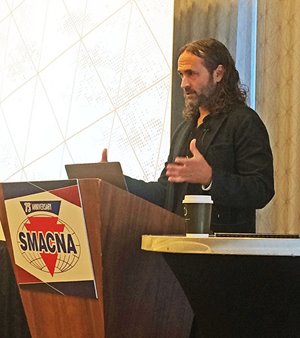
Heath May
“Marketing is not bought like the other things you buy when you’re buying your HVAC systems for replacement,” she added. “When you’re buying marketing, you have to think of it differently.”
Barnes said you need to think about quantifying the return on your marketing investment, illustrating a costly situation where her company was acquiring another company and they did not think of asking about the cost of customer acquisition before the deal was closed. Instead of a similar $250 cost per new customer acquired, Barnes was faced with a $2,500 cost per new customer acquired. Quite a difference, and quite an impact on the bottom-line. While she did reduce that, she encouraged everyone to examine their cost per acquisition to gauge the effective of marketing budgets, especially if bidding is a big part of the revenue equation.
Does Your Company Need an Attitude Adjustment?
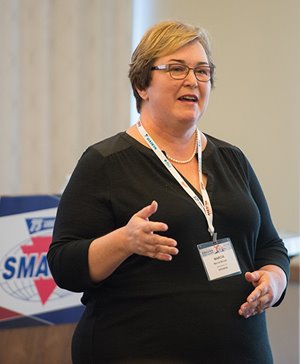
Marcia Barnes
Construction business consultant DeWayne Ables of Pioneer iQ returned to the SMACNA convention this year to let 150 attendees at this year’s HVAC Contractors Forum know that the attitude of employees, including executives, can impact the success of a company.
“Are you dreading going into the office?” Ables asked the audience. “(Or) Are you fired up?”
Either way, Ables said you have to avoid slipping into the routine of what he called “manager mode” or “leader mode.” Both are like corporate autopilot and mean a business isn’t receiving the attention and passion it deserves.
“At the end of the day, our attitude and our perspective, when it hits the rest of the people on our team, it affects them,” he said. “And we need to be more aware of the effect that you are having on your team.”
Industrial Demand Expected to Stay Strong
While few industries are still called “recession-proof,” industrial HVAC work is more resilient than other sectors of the construction economy.
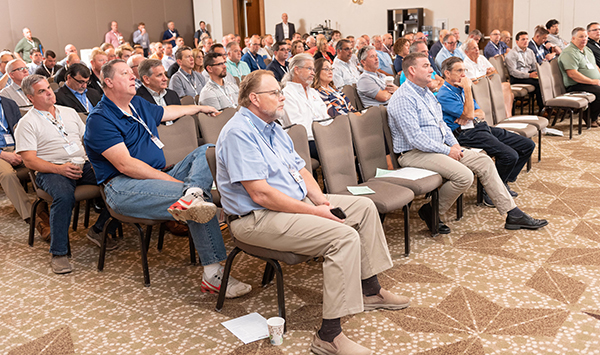
That was the opinion of Jay Bowman at research firm FMI Corp. SMACNA brought Bowman, a managing director at FMI, to Austin to present his recent research on Industrial ventilation at the Industrial Contractors Forum.
Bowman said industrial contractors like those that belong to SMACNA do “remarkable work.” And it’s the kind of work that’s always in demand, he added.
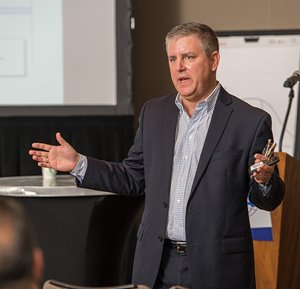
Jay Bowman
“The industrial market overall does represent a good plan B in case there is a recession,” he said, adding that he doesn’t know when the next downturn will hit. “But we know that one will occur at some point.”
But as of now, the construction market remains healthy — and Bowman said he doesn’t expect that to change anytime soon. Certain sectors, such as those dealing with industrial ventilation and related indoor environmental quality (IAQ) systems, are expected to be very strong, he pointed out.
Bowman also noted that expanding growth in the bio/pharmaceutical, cold storage and paper/packaging sectors offered distinct opportunities for SMACNA industrial contractors.
A Technology Evolution in Architectural Sheet Metal
Outsiders might not think of architectural sheet metal as an industry where new technologies are causing disruption, but they don’t know the field as well as SMACNA. As many members involved in this highly skilled market know, new trends, technologies and techniques are changing an industry that literally dates back thousands of years. For this year’s Architectural Sheet Metal Forum, SMACNA brought Heath May, a member of the American Institute of Architects, and the principal and director of HKS Laboratory for INtensive Exploration, to discuss the technology-induced changes in project design and delivery.
The digital revolution is not only impacting design but also fabrication, May said. And while it’s upending the industry, that’s not necessarily bad, he added.
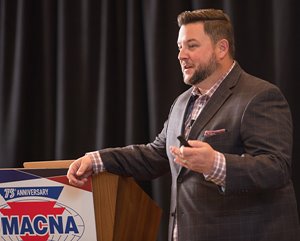
DeWayne Ables
“We see a lot of challenges as well as opportunities with this process,” May said. “And this is really trying to keep things within a digital model, printing to paper as infrequently as possible.”
The way information is disseminated is also changing, he said.
“And we will really get into some kind of novel and new ways of pushing that data downstream,” he said. “Digital documentation will talk about what methods are currently available for stamping and sealing a model. And I think as people here in this room … we’re all interested in a way to use a model more effectively to be able to rely on that from a legal standpoint for permitting purposes.”
Laboring to Grow
Recruiting and retaining members. Attracting millennials and women to the industry. And promoting SMART as the go-to organization for sheet metal expertise.
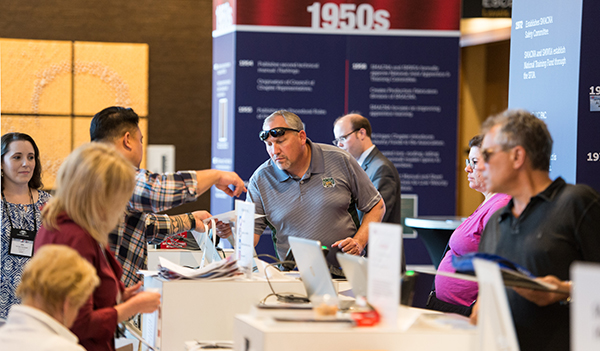
Those were among the issues addressed at this year’s Labor Forum. SMART President Joseph Sellers Jr. took the stage for an hour-long discussion of industry issues.
Among the most pressing subjects, Sellers said, is attracting young men — and women — to the sheet metal industry. Baby boomer-age workers are already starting to retire, and the pace will only increase in the next decade. But recruitment efforts will not succeed, he said, unless discrimination is driven out of the industry.
“We as an industry need to stand together,” Sellers said. “We’re not going to have harassment. We’re not going to have bullying. We’re not going to have wage inequality. And we as a union need to stand to protect our industry and protect those who are being harmed in our industry.”
Sellers said the sheet metal industry has long talked about its strong safety culture. Now, it needs to turn its focus to the culture of behavior on the jobsite. Verbal abuse and discrimination cannot be tolerated, he said.
“We need to stand up to make sure we’re protecting our sisters or brothers or minorities,” Sellers said. “Whatever the case may be, this industry stands for equality.”